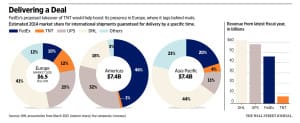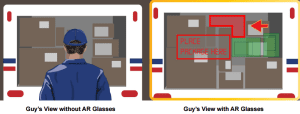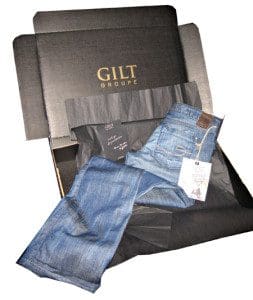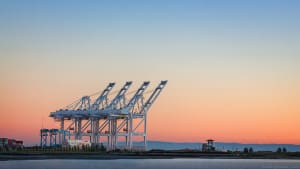 Yesterday morning, I had a nice relaxing cup of coffee outside and finally enjoyed some warm weather. That’s because I spent most of the week in Atlanta attending a conference. Well, in reality it was three conferences wrapped up in one: Home Delivery World, Click & Collect Show USA, and ETail Show USA. The three conferences shared a common venue as well as common keynotes, but each had their own respective breakout sessions focused home delivery, in-store fulfillment, and e-commerce trends. I’ll be writing about some of the sessions and key themes from the show(s) in the coming weeks. A big portion of the content was around last mile, and all the challenges that companies are facing. Generally, last mile is the most expensive, least efficient, and most problematic part of the overall delivery process. It puts added strain on the supply chain, from both a planning an execution standpoint. But it was exciting to see all these companies coming together to discuss and debate the best way to improve customer service, lower costs, and decode some of the last mile mysteries that are out there. No one is saying they have it all figured out just yet, but progress is certainly being made. And as more focus is placed in figuring out last mile, it will continue to improve.
Yesterday morning, I had a nice relaxing cup of coffee outside and finally enjoyed some warm weather. That’s because I spent most of the week in Atlanta attending a conference. Well, in reality it was three conferences wrapped up in one: Home Delivery World, Click & Collect Show USA, and ETail Show USA. The three conferences shared a common venue as well as common keynotes, but each had their own respective breakout sessions focused home delivery, in-store fulfillment, and e-commerce trends. I’ll be writing about some of the sessions and key themes from the show(s) in the coming weeks. A big portion of the content was around last mile, and all the challenges that companies are facing. Generally, last mile is the most expensive, least efficient, and most problematic part of the overall delivery process. It puts added strain on the supply chain, from both a planning an execution standpoint. But it was exciting to see all these companies coming together to discuss and debate the best way to improve customer service, lower costs, and decode some of the last mile mysteries that are out there. No one is saying they have it all figured out just yet, but progress is certainly being made. And as more focus is placed in figuring out last mile, it will continue to improve.
And now, on to the news.
- FedEx to buy TNT Express for $4.8 billion (WSJ subscription required)
- How reality-altering glasses could save the Postal Service millions
- Gilt diversifies its shipping strategy
- Port of Oakland reports less congestion
- Cross-border truck freight rises in January
 FedEx Corp. agreed to buy Dutch package-delivery company TNT Express NV for $4.8 billion. This is a big move for FedEx as the company looks to capitalize on the e-commerce growth in Europe. FedEx does not have a large ground delivery business in Europe, so the acquisition gives FedEx an established ground network in over 40 countries. The all-cash deal still needs to be approved by European Union regulators, who previously stopped a bid from UPS to acquire TNT for $7 billion. Both sides think the deal will not get held up considering there is significantly less overlap between the businesses. If the merger is completed, the company would own about 22% of Europe’s international express-delivery market, making it the third largest carrier behind DHL and UPS.
FedEx Corp. agreed to buy Dutch package-delivery company TNT Express NV for $4.8 billion. This is a big move for FedEx as the company looks to capitalize on the e-commerce growth in Europe. FedEx does not have a large ground delivery business in Europe, so the acquisition gives FedEx an established ground network in over 40 countries. The all-cash deal still needs to be approved by European Union regulators, who previously stopped a bid from UPS to acquire TNT for $7 billion. Both sides think the deal will not get held up considering there is significantly less overlap between the businesses. If the merger is completed, the company would own about 22% of Europe’s international express-delivery market, making it the third largest carrier behind DHL and UPS.
 The Postal Service has been looking for new and innovative ways to improve their business. Well, reality-altering glasses may be part of the answer. Augmented reality users typically wear glasses that display a layer of information. According to the Inspector General, letter carriers would benefit the most from AR glasses. There are three main areas where carriers can become more efficient. The first is the loading of the truck. The AR glasses could display information on where every package should be loaded. This makes the initial loading of the truck quicker and also makes the entire route more efficient. The second area is around vehicle repairs. A digital display instructing postal employees on how to fix their vehicles could save an estimated $39 million annually. The final area where AR glasses can benefit carriers is by displaying direction on the windshield of the truck. This leads to safer and more efficient driving. While it would be a steep initial investment (AR glasses range from $400 to $1,500), the Inspector General said the efficiencies outweigh the price.
The Postal Service has been looking for new and innovative ways to improve their business. Well, reality-altering glasses may be part of the answer. Augmented reality users typically wear glasses that display a layer of information. According to the Inspector General, letter carriers would benefit the most from AR glasses. There are three main areas where carriers can become more efficient. The first is the loading of the truck. The AR glasses could display information on where every package should be loaded. This makes the initial loading of the truck quicker and also makes the entire route more efficient. The second area is around vehicle repairs. A digital display instructing postal employees on how to fix their vehicles could save an estimated $39 million annually. The final area where AR glasses can benefit carriers is by displaying direction on the windshield of the truck. This leads to safer and more efficient driving. While it would be a steep initial investment (AR glasses range from $400 to $1,500), the Inspector General said the efficiencies outweigh the price.
 Gilt Groupe, the online flash sale retailer, has made a significant shift in its shipping strategy. The online retailer has moved the majority of its ground shipping volume from UPS to Newgistics. The company began looking at ways to diversify its shipping strategy following the disastrous holiday season of 2013. Gilt began working with Newgistics in 2012 to handle product returns. Newgistics carries packages through its ground network and hands them off to the Postal Service for last mile delivery. Rate increases were also a big consideration for Gilt when choosing a new delivery strategy. Delivery will now take a little longer, but Gilt says the savings by using Newgistics rather UPS means the company can offer free shipping on more products and invest more money into promotions.
Gilt Groupe, the online flash sale retailer, has made a significant shift in its shipping strategy. The online retailer has moved the majority of its ground shipping volume from UPS to Newgistics. The company began looking at ways to diversify its shipping strategy following the disastrous holiday season of 2013. Gilt began working with Newgistics in 2012 to handle product returns. Newgistics carries packages through its ground network and hands them off to the Postal Service for last mile delivery. Rate increases were also a big consideration for Gilt when choosing a new delivery strategy. Delivery will now take a little longer, but Gilt says the savings by using Newgistics rather UPS means the company can offer free shipping on more products and invest more money into promotions.
 The vessel backlog that has put a chokehold on containerized trade since January is starting to ease. The Port of Oakland announced that the backlog has eased and there are currently no vessels in San Francisco Bay or outside the Golden Gate awaiting berths. This is the first time that ships have berthed without delay in Oakland in three months. The congestion is still an issue in Southern California as up to ten ships remain anchored at those ports. Officials warn that the logjam in Southern California could impact the Port of Oakland again as vessels will arrive off-schedule and in Oakland in bunches. The good news is that the easing of the backlog has begun and the ports are on their way back to normal operations. In fact, according to the NRF, import cargo volume at the nation’s major retail container ports is expected to rise 8 percent this month over the same time last year.
The vessel backlog that has put a chokehold on containerized trade since January is starting to ease. The Port of Oakland announced that the backlog has eased and there are currently no vessels in San Francisco Bay or outside the Golden Gate awaiting berths. This is the first time that ships have berthed without delay in Oakland in three months. The congestion is still an issue in Southern California as up to ten ships remain anchored at those ports. Officials warn that the logjam in Southern California could impact the Port of Oakland again as vessels will arrive off-schedule and in Oakland in bunches. The good news is that the easing of the backlog has begun and the ports are on their way back to normal operations. In fact, according to the NRF, import cargo volume at the nation’s major retail container ports is expected to rise 8 percent this month over the same time last year.
 And finally, cross-border truck freight rose in January. The amount of freight moved between the U.S. and Canada and Mexico totaled $89.3 billion in January, according to U.S. Transportation Department figures, down 1.2% from a year earlier. However, compared to a year earlier, the value of commodities moving by rail in January grew by 4.8%, the largest percentage of any mode. Truck freight increased by 3.6% and air rose by 1.3%. Vessel freight dropped 21.8% and pipeline freight fell 22.5%. Trucks carried 62.3% of U.S.-NAFTA freight and were the most heavily used mode for moving goods to and from both U.S.-NAFTA partners. Trucks accounted for $27.4 billion of the $47.5 billion of imports, or 57.7%, and $28.2 billion of the $41.8 billion of exports or 67.6%
And finally, cross-border truck freight rose in January. The amount of freight moved between the U.S. and Canada and Mexico totaled $89.3 billion in January, according to U.S. Transportation Department figures, down 1.2% from a year earlier. However, compared to a year earlier, the value of commodities moving by rail in January grew by 4.8%, the largest percentage of any mode. Truck freight increased by 3.6% and air rose by 1.3%. Vessel freight dropped 21.8% and pipeline freight fell 22.5%. Trucks carried 62.3% of U.S.-NAFTA freight and were the most heavily used mode for moving goods to and from both U.S.-NAFTA partners. Trucks accounted for $27.4 billion of the $47.5 billion of imports, or 57.7%, and $28.2 billion of the $41.8 billion of exports or 67.6%
That’s the news for this week. Have a great weekend, and enjoy the song of the week: Keep Your Hands to Yourself by the Georgia Satellites.
















